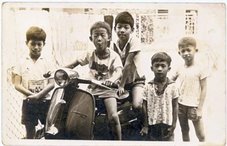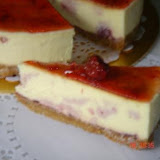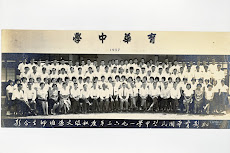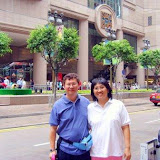Er Hu Chinese Violin, Chan Kum Loong
I visited a friend in Shah Alam and he invited us for dinner and mentioned that his Er Hu teacher (Mr. Chan Kum Loong) will be joining us and after that maybe play us a song or two. After a casual introduction we found out that he once taught Er Hu in SMJK Yu Hua Kajang. He spoke passionately about music and his Er Hu, we finished dinner and proceeded back to my friend house. He insisted that before he play his Er Hu he would like to hear KC sing a song which she obliged with a chinese number by Teresa Teng. And I requested that he allowed me to video him playing his Er Hu. Ah Loong as he is known, sometimes get invited along with some of his friends to perform usually for dinner functions such as birthday and etc.
I did a search on the internet and I found out that Er Hu has over a thousand year history. Er Hu is a kind of violin (fiddle) with two strings which, together with zhonghu, gaohu, sihu, etc, belongs to the "huqin" family. It is said that its origin dated back to the Tang dynasty (618-907) and related to the instrument, called xiqin originated from a Mongolian tribe Xi. During Song dynasty (960-1279), the second generation of the huqin was among the instruments played at the imperial banquets. During the Dynasties of Ming (1368-1644) and Qing (1644-1911), the Er Hu underwent a great development at the time of the golden age of the local operas. The Er Hu then developed into different "schools". Two famous artists Hua Yanjun (1893-1950) and Liu Tianhua (1895-1932) made an exceptional contribution to the improvement of the Er Hu, and it was indeed due to the latter that the erhu, an instrument mainly for accompaniment in an opera, became a solo instrument. After the formation of the People's Republic of China (1949), the production of the Er Hu, the playing techniques, the repertoire as well as the musical education of this instrument have undergone an unpresidented development. The repertoire has grown rapidly in the genres of solo, with ensemble as well as concerti with symphony orchestra. Er Hu now has become one of the most popular instruments in China.
Teresa Teng Song
The sound body of the Er Hu is a drum-like little case usually made of ebony or sandalwood and snake skins. It usually has a hexagonal shape with the length of approximately 13 cm. The front opening is covered with skin of python (snake) and that of the back is left open. The functions of this case of resonance are to amplify the vibrations of the strings. The neck of the Er Hu is about 81 cm long and is manufactured with the same materials as the drum. The top of the stem is bent for decoration. The two strings of the Er Hu is usually tuned D and A. The two tuning handles (pegs) are found close to the end of the stem. There is no frets (as contrast to the lute) or touching board (as contrast to violin). The player creates different pitches by touching the strings at various positions along the neck of the instrument. The strings are usually made of silk or nylon. Nowadays, metal strings are commonly used. The bow is 76 cm long and is manufactured of reed which one curves during cooking and arched with horse hair in the same way as the bow of violin. However, in the case of Er Hu, the horse's hair runs between the two strings. One cannot take off the bow from the instrument unless one of the two strings is taken off or broken. (the above is extracted from www.philmultic.com)
I was amazed with the song played on the Er Hu and it felt as if some part of my body move along with the rhythm, well if you have the opportunity to listen live you will understand what I mean.
Teresa Teng Song


















15 comments:
Hi, I'm from Malacca. Do you know where I can rent a house here in Kajang? TQ!
Hi coolsanagi82,
There is a furnished apartment with swimming pool, 3r + 2b with covered car park available.
Thanks alot but is it ok if u let me know about the price of the rental too? Besides, is this apt located nearby kajang KTM station? If yes, then it'll be the best for me since I need to ride on the KTM to take me to KL Sentral b4 I can transit to Bkt. Bintang! So much as so, I choose to stay here coz it'll be the nearest destination to UKM....
RM$ 750 fully furnished, but it is about 1 km from KTM so may not be what you want, maybe you let me know your requirement for how many person i will let my friend who is a real estate agent find out based on your requirement
Of course the erhu bow can be removed from the erhu, altho' this would not be done frequently. Just unclip or unscrew the bowhair portion, similar to how it's done for a violin bow.
Hi,
Do you know where to find er hu class?
I am thinking to learn er hu.
Thanks
Vpong
Hi vpong,
Actually Chan Kum Loong is available to teach but I will have to ask him through my friend in Shah Alam. And Chan stays around Cheras area.
Thank you to The Chengs for the comment on removing the Er Hu Bow
That's ok, Flipper. We have an erhu player here in the house - one that is so short that I have to help him change his strings and rosin his bow. We've also had to change his bow 3times already in the past year that he has picked up erhu. *haha* So yeah, I'm very familiar with that instrument, altho' I can't play it!!! *hah*.
By the way, it's so cute - "Flipper" was the nickname I had for our little erhu boy when he was in-utero.
Coincidentally 'Flipper' the name was given to me by my teachers during primary school when the TV show "Flipper" was a hit as I was always jumping around class. So you would be able to guess my age???
Er, older than me, lor.
he he he! but still young at heart. Thats the most important thing.
Do you like traveling around Malaysia visit me at
http://www.malaysiatrekking.blogspot.com
Gostei muito desse post e seu blog é muito interessante, vou passar por aqui sempre =) Depois dá uma passada lá no meu site, que é sobre o CresceNet, espero que goste. O endereço dele é http://www.provedorcrescenet.com . Um abraço.
Post a Comment